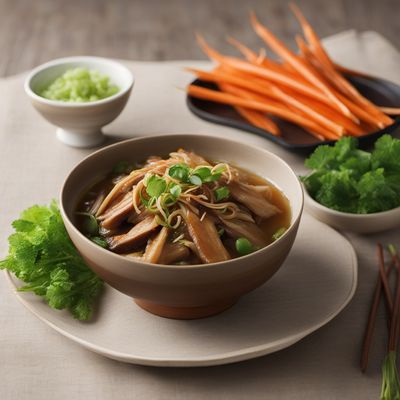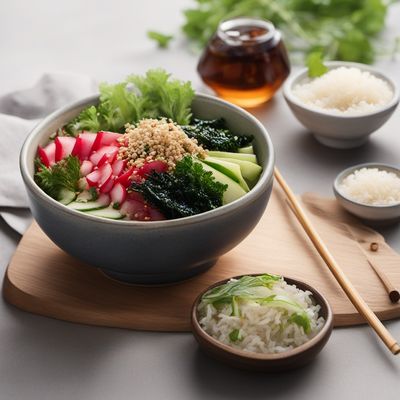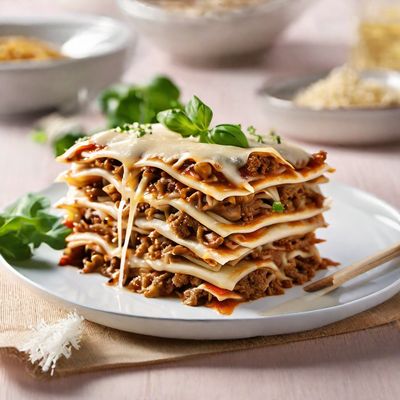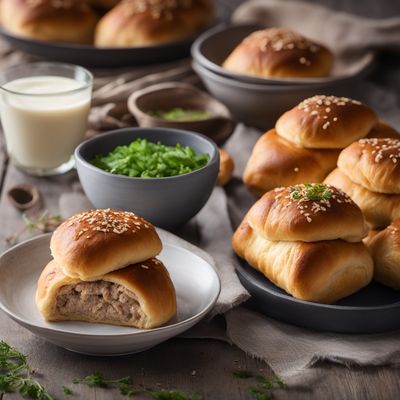
Recipe
Franconian-style Chicken Stew
Hearty Franconian Chicken Stew: A Taste of Bavarian Comfort
4.5 out of 5
Indulge in the flavors of Franconian cuisine with this delightful Franconian-style Chicken Stew. This hearty dish combines tender chicken, seasonal vegetables, and aromatic spices to create a comforting and satisfying meal.
Metadata
Preparation time
20 minutes
Cooking time
1 hour
Total time
1 hour and 20 minutes
Yields
4 servings
Preparation difficulty
Easy
Suitable for
Omnivore, Gluten-free, Dairy-free, Nut-free, Low-carb
Allergens
N/A
Not suitable for
Vegan, Vegetarian, Paleo, Keto, Halal
Ingredients
In this Franconian adaptation of Chikuzenni, we replace traditional Japanese ingredients like soy sauce and mirin with Franconian spices such as marjoram and caraway seeds. The dish also incorporates local Franconian vegetables like carrots and potatoes instead of the original Japanese vegetables. The cooking technique remains similar, with the chicken and vegetables simmered in a flavorful broth, but the flavors and ingredients are adjusted to suit the Franconian cuisine. We alse have the original recipe for Chikuzenni, so you can check it out.
-
1.5 kg (3.3 lbs) chicken pieces, bone-in and skin-on 1.5 kg (3.3 lbs) chicken pieces, bone-in and skin-on
-
2 tablespoons vegetable oil 2 tablespoons vegetable oil
-
2 onions, chopped 2 onions, chopped
-
3 carrots, peeled and sliced 3 carrots, peeled and sliced
-
4 potatoes, peeled and cubed 4 potatoes, peeled and cubed
-
2 cloves of garlic, minced 2 cloves of garlic, minced
-
1 teaspoon marjoram 1 teaspoon marjoram
-
1 teaspoon caraway seeds 1 teaspoon caraway seeds
-
1 bay leaf 1 bay leaf
-
1 liter (4 cups) chicken broth 1 liter (4 cups) chicken broth
-
Salt and pepper, to taste Salt and pepper, to taste
Nutrition
- Calories (kcal / KJ): 450 kcal / 1884 KJ
- Fat (total, saturated): 20g, 5g
- Carbohydrates (total, sugars): 25g, 5g
- Protein: 40g
- Fiber: 5g
- Salt: 1.5g
Preparation
-
1.Heat the vegetable oil in a large pot over medium heat.
-
2.Add the chicken pieces to the pot and cook until browned on all sides. Remove the chicken from the pot and set aside.
-
3.In the same pot, add the chopped onions and minced garlic. Sauté until the onions are translucent.
-
4.Add the carrots, potatoes, marjoram, caraway seeds, and bay leaf to the pot. Stir well to combine.
-
5.Return the chicken pieces to the pot and pour in the chicken broth.
-
6.Season with salt and pepper to taste.
-
7.Bring the stew to a boil, then reduce the heat to low and simmer for about 1 hour, or until the chicken is cooked through and the vegetables are tender.
-
8.Remove the bay leaf before serving.
-
9.Serve the Franconian-style Chicken Stew hot with crusty bread or dumplings.
Treat your ingredients with care...
- Chicken — For the best flavor and tenderness, use bone-in and skin-on chicken pieces. This will add richness to the stew and keep the meat moist during cooking.
Tips & Tricks
- To enhance the flavors, you can marinate the chicken pieces in Franconian spices and a splash of white wine for a few hours before cooking.
- For a thicker stew, you can mix a tablespoon of flour with a little water and add it to the stew during the last 10 minutes of cooking.
Serving advice
Serve the Franconian-style Chicken Stew in deep bowls, allowing guests to enjoy the flavorful broth alongside the tender chicken and vegetables. Garnish with fresh parsley for a pop of color.
Presentation advice
To make the dish visually appealing, arrange the chicken pieces on top of the stew and sprinkle some additional marjoram or caraway seeds for a touch of elegance.
More recipes...
More Japanese cuisine dishes » Browse all

Pīman no nikuzume
Stuffed Peppers
Pīman no nikuzume is a Japanese dish made with green peppers stuffed with ground meat and vegetables. The dish is typically served as a main...
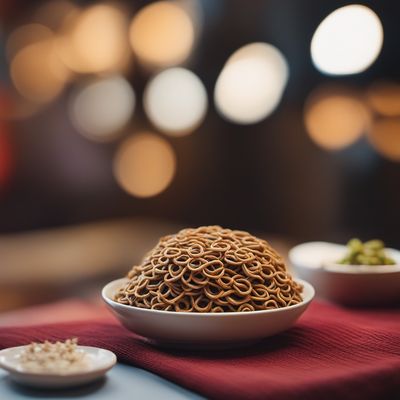
Soba boro
Soba boro is a traditional Japanese cookie that is made with buckwheat flour. It is a sweet and crunchy cookie that is perfect for snacking.
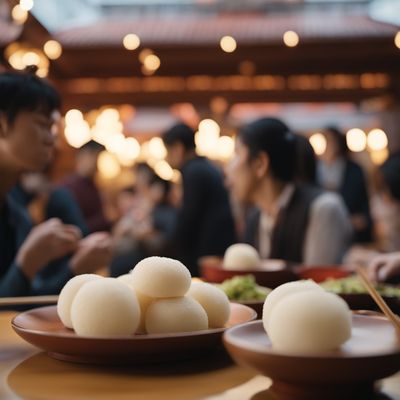
Kusa mochi
Kusa Mochi
Kusa mochi is a traditional Japanese sweet made of mochi (glutinous rice cake) that is flavored with yomogi (Japanese mugwort).
